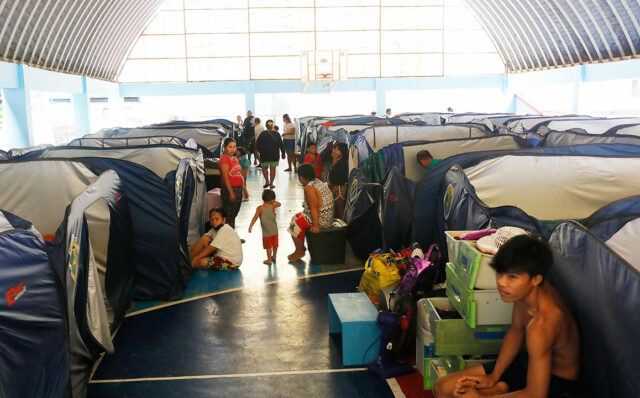Transfer Pricing is here to stay
Whether before or during the pandemic, related party transactions continued to proliferate both on a domestic and global scale. Business organizations should be mindful of the complexities of the rules surrounding their transactions with related parties. Philippine taxpayers have been anticipating transfer pricing audits by the Bureau of Internal Revenue (BIR) as it intensifies its risk assessment and audit activities.
The regulatory framework for transfer pricing is envisaged to alter the overall tax architecture under which related party businesses operate. A thorough understanding of transfer pricing would allow businesses to effectively plan and future-proof their operations. We take a step back as we look into the evolution of rules in the Philippines and what the future holds for transfer pricing.
TRANSFER PRICING THROUGH THE YEARS
Transfer pricing is rooted in Section 50 of the National Internal Revenue Code which empowers the Commissioner of Internal Revenue to make an allocation of income and expenses between or among controlled group of companies if he determines that a related taxpayer has not reported their true taxable income. Prior to the issuance of local regulations, the BIR sought guidance from the Organization for Economic Cooperation and Development (OECD) transfer pricing guidelines.
In 2013, the BIR issued the Transfer Pricing regulations to provide a set of rules in the determination of the appropriate revenue and taxable income of parties in a controlled transaction. The regulations require the maintenance of contemporaneous transfer pricing documentation, which must exist when the associated enterprises develop or implement any arrangement, or at the latest, when preparing the annual income tax return.
In 2019, the implementation of transfer pricing was given more teeth when the BIR issued the Transfer Pricing Audit regulations. These provided a set of guidelines for revenue officers to propose adjustments by imputing an arm’s length price on related party transactions that are not in accordance with the arm’s length principle.
The next set of relevant BIR issuances on transfer pricing were released in rapid succession during the height of the pandemic, progressing to the next phase of transfer pricing from compliance to enforcement.
In 2020 and 2021, to generate new sources of funding for the government’s pandemic response, the BIR prescribed rules on the disclosure of related party transactions and submission of a transfer pricing form for taxpayers which are covered by the documentation requirement. Through these disclosures, the BIR has clearer visibility on taxpayers with related party transactions, which could be the target for transfer pricing audits.
In 2022, new regulations on Mutual Agreement Procedures (MAP) provide Philippine taxpayers with an alternative mode to resolve disputes from differences in the interpretation or application of tax treaties. One of the typical scenarios requiring MAP assistance is when a taxpayer is subjected to additional tax in one country due to a transfer pricing adjustment from a transaction with its related party in the other country.
THE NECESSARY PREPARATION OF TRANSFER PRICING DOCUMENTATION
With the issuance of amendatory regulations limiting the scope of preparation of transfer pricing documentation to certain types of related party taxpayers and providing for materiality thresholds on the amount of their transactions, other taxpayers with related party transactions are still enjoined to prepare transfer pricing documentation. After all, the burden of proof rests upon the taxpayer on whether its related party transactions adhere to the arm’s length principle.
The Transfer Pricing Audit regulations provide that taxpayers must ensure that the related party transaction they enter into is commercially realistic and makes economic sense. As such, taxpayers are expected to maintain contemporaneous documentation. In case of operating losses, the documentation must outline the non-transfer pricing factors that contributed to the losses. In light of the pandemic, affected taxpayers with related party transactions should carry out a Special Factor Analysis in their transfer pricing documentation where all legal and economic justifications are in place to establish a defensible position for business losses or reduced profits during the covered periods.
With the issuance of a Revenue Memorandum Order in 2021 streamlining the procedures and documents for the availment of treaty benefits, taxpayers applying for a tax treaty relief application or request for confirmation in relation to interest income are now required to present proof that the interest rate used in the finance transaction is arm’s length. In addition, we have seen the BIR request for the submission of transfer pricing documentation even for tax treaty relief applications or requests for confirmation for other types of cross-border transactions such as business profits and royalties.
There is also an interplay with the Bureau of Customs as it has the authority to question the determination of customs valuation relating to cross border transactions between related parties. A transfer pricing documentation could help support and justify the value of the imported goods purchased from foreign related parties.
Further, the MAP regulations make it clear that the preparation of a transfer pricing documentation is a prerequisite in availing of MAP assistance.
THE FUTURE OF TRANSFER PRICING
Government tax policymakers around the world are working together on proposals for significant changes to long-standing international tax rules in light of the OECD’s Base Erosion and Profit Shifting (BEPS) initiative on the globalization and digitalization of the economy. These developments would significantly alter the overall international tax architecture under which multinational businesses with related party transactions operate.
In the Philippines, tax audits with transfer pricing issues have yet to be fully operationalized by the BIR since the inception of transfer pricing audit guidelines. However, taxpayers should not rest on their laurels because the BIR is continuously beefing up its capabilities through continued training of its revenue officers.
With the recent issuance of the MAP regulations, it will only be a matter of time before the Advance Pricing Arrangement (APA) regulations will be released. An APA is an arrangement that determines in advance of controlled transactions, an appropriate set of criteria for the determination of the transfer pricing for transactions over a fixed period of time. The APA has always been a part of the BIR’s strategic plan for 2019-2023 because it is expected to address the country’s growing transfer pricing problems with the cooperation of taxpayers, particularly in relation to tax base reduction and profit apportionment schemes.
While the OECD BEPS Action Plan 13 has not yet been adopted in the Philippines, multinational companies operating in the Philippines and Philippine conglomerates may still be required to comply with the Master File, Local File and Country-by-Country Reporting requirement.
Now that the BIR has information on related party disclosures that are not otherwise disclosed in traditional tax returns, we may expect increased traction in the conduct of transfer pricing audits. In view of the upcoming e-Invoicing System implementation by the BIR, taxpayers with related party transactions must be aligned with their transfer pricing policies as they will be providing information to the BIR in real time. Taxpayers should be proactive in examining their transfer pricing risks by preparing contemporaneous transfer pricing documentation.
This means a comprehensive approach to systematically address transfer pricing issues and the preparation of robust transfer pricing documentation will be critical to ensure compliance with the arm’s length principle.
This article is for general information only and is not a substitute for professional advice where the facts and circumstances warrant. The views and opinions expressed above are those of the authors and do not necessarily represent the views of SGV & Co.
Atty. Ana Katrina C. De Jesus is a tax principal and Atty. Natasha Kim R. Tec is a tax associate director of SGV & Co.












